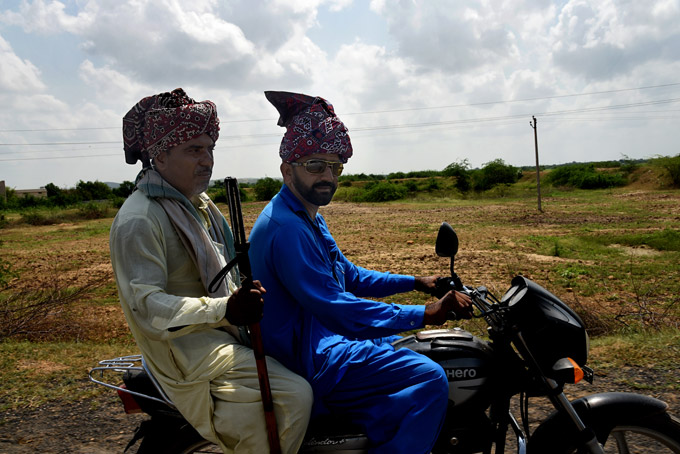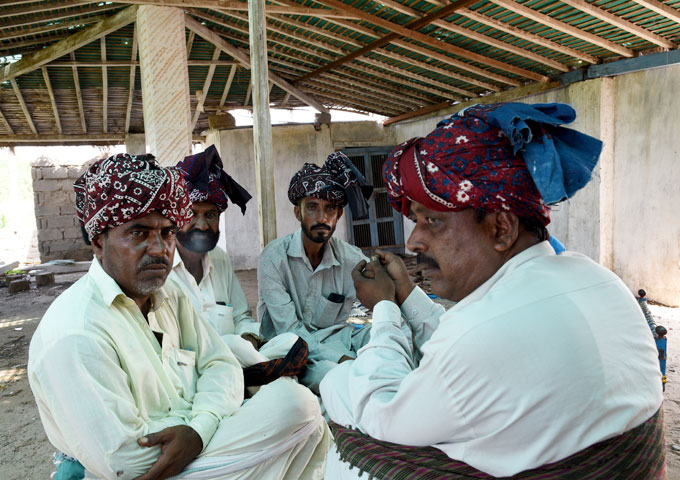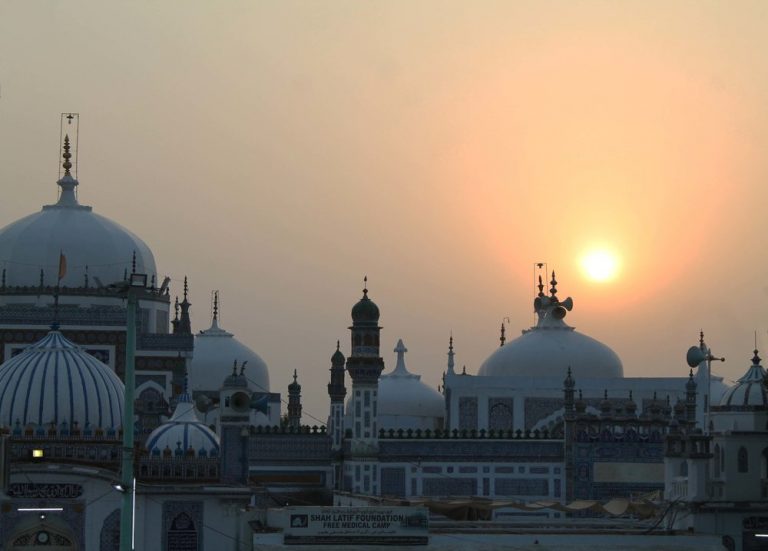
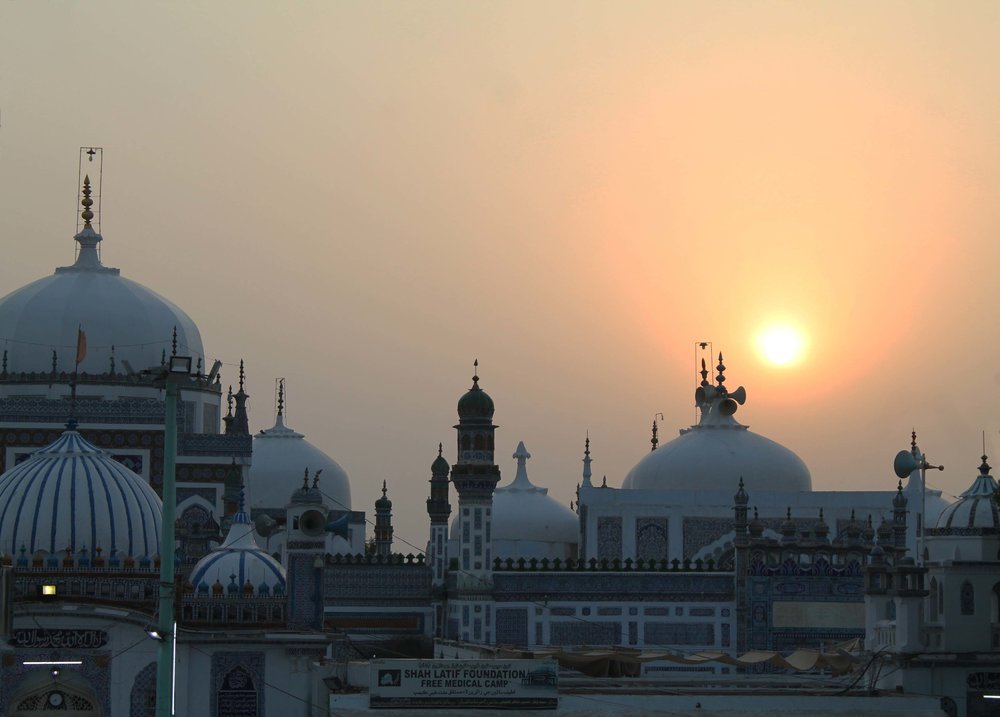
Ajrak, a piece of cloth, and a verse of Sindhi poetry allow pastoralists in Gujarat to express a memory and yearning for Sindh. Although widely produced within Kutch itself, Ajrak from Sindh is more highly valued. There is a little Sindh in Kutch.
BY FARHANA IBRAHIM
A couple of years ago, while living and researching in Bhuj, the capital of Kutch District in Gujarat state, I became interested in purchasing some recorded qafis. This haunting poetic genre is originally from Sindh, but remains popular among the Muslim pastoralists of northern Kutch, sung in the wide expanses of the Great Rann of Kutch. Although Sindh is a mere 140 kilometers away from Bhuj, I had found few overt traces of the Pakistani province. The qafi, however, remains a rich source of regional, cross-border history for both Kutch and Sindh.
It seemed, however, that trans-border references were somewhat taboo in public, and none of the well-stocked music shops had what I was looking for. Finally, directed to a narrow lane of stalls tucked away behind the main market street, I found what I was looking for. Here were all kinds of smuggled and second-hand goods – leather, electronics, Islamic literature, cassettes of music and religious discourses, cloth and a myriad other sundries. Amidst tall stacks of cheap copies of music cassettes from popular Indian films, I also found an equally large selection of music from across the frontier – popular Pakistani singers singing in Urdu and Sindhi, some of whom were even born in Kutch, the shop owners said with pride. This narrow row of shops, in the heart of Bhuj and yet somewhat hidden, was a transformed space. Here, Kutch was no longer insulated from its historical linkages – Sindh thrived here, most notably in its folk music. But it was hidden away; one would not stumble upon these stalls or their wares unbidden.
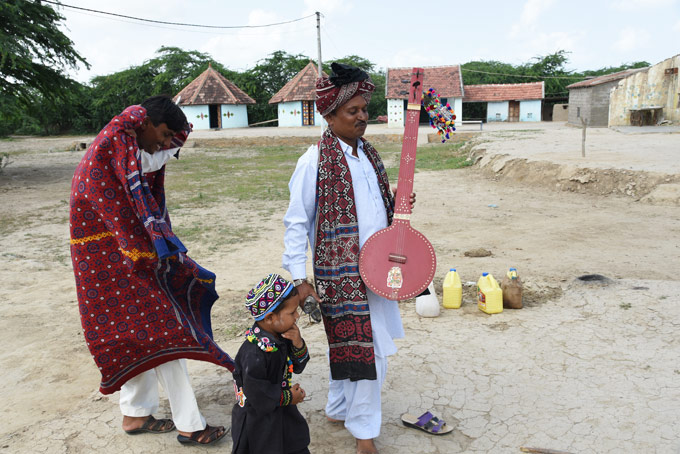 As with goods, I found it remarkable how little Sindh came up for discussion in Kutch. Certainly, political oratory in Gujarat regularly refers to Pakistan. But it is generalizing and rhetorical, used to extract political mileage by advocates of right-wing Hindu nationalism – such as the representation of Islam, Pakistan and, by extension, Indian Muslims in general, as isomorphic and therefore ‘other’. Nowhere does one find reference to cultural traits that are shared in fact shared by Sindh and Kutch.
As with goods, I found it remarkable how little Sindh came up for discussion in Kutch. Certainly, political oratory in Gujarat regularly refers to Pakistan. But it is generalizing and rhetorical, used to extract political mileage by advocates of right-wing Hindu nationalism – such as the representation of Islam, Pakistan and, by extension, Indian Muslims in general, as isomorphic and therefore ‘other’. Nowhere does one find reference to cultural traits that are shared in fact shared by Sindh and Kutch.
It is not difficult to understand why this is so. Classification and boundary-making, both real and epistemological, are at the heart of constructing identities. Modern territorial nation states are ideologically invested in imagining themselves to be territorially discrete and internally homogenous. After the separation of Pakistan in 1947, Kutch gained new significance as a strategic border territory; it lay on a newly defined boundary that needed to be naturalized and legitimized at all costs. In Kutch, and Gujarat more generally, this has been done through a relatively consistent ‘othering’ of Pakistan and Muslims within Gujarat, particularly pronounced after the 2002 anti-Muslim pogroms in the state. This has generated a peculiar ambivalence in Kutch about adjacent Sindh: they are immediate neighbors, they share historical and cultural ties, but they now lie across a problematic boundary.
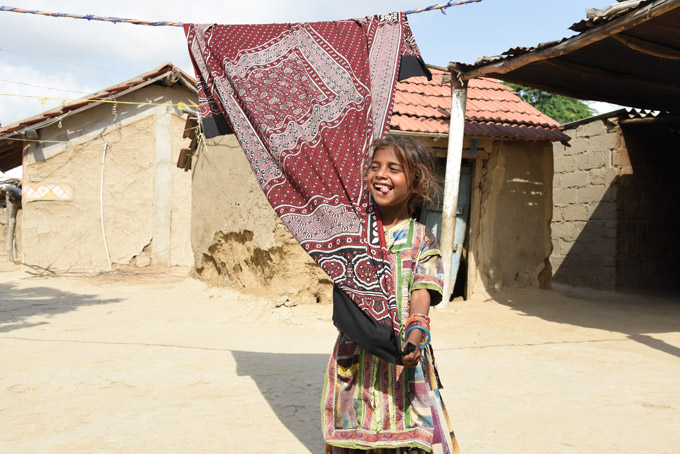 The Jats are a semi-nomadic pastoral group that inhabited both sides of this border region before 1965. Prior to the present geopolitical reorganization of 1947, mobile groups like the Jats were involved in trade linking Kutch and Sindh and going as far as Punjab and Afghanistan. The Jat pastoralists would wander back and forth in search of fodder, particularly in times of drought. The border is now blocked and the Sindh pastures are only a memory, and yet Sindh remains present in the lives of the Jats in other ways.
The Jats are a semi-nomadic pastoral group that inhabited both sides of this border region before 1965. Prior to the present geopolitical reorganization of 1947, mobile groups like the Jats were involved in trade linking Kutch and Sindh and going as far as Punjab and Afghanistan. The Jat pastoralists would wander back and forth in search of fodder, particularly in times of drought. The border is now blocked and the Sindh pastures are only a memory, and yet Sindh remains present in the lives of the Jats in other ways.
The narratives of the Jats provide an interesting contrast to the manner in which Sindh is presented in the nationalist narratives of Gujarat. In particular, doth and poetry remain the condensed expressions of the cultural celebration of Sindh in the northern Kutch region of the Banni grasslands. Through cloth and poetry, the pastoral communities are able to express a desire for Sindh that cannot quite be articulated in the political realm.
Ajrakh (Ajrak) is a type of block-printed cotton cloth common in both Sindh and Kutch, especially among the pastoralists. It is a ubiquitous, multipurpose wrap that can be tied as a turban or lungi, or used as a blanket or shawl. The cloth is worn mostly by Muslims, and is exchanged within groups that are entirely male and usually Muslim. The geometrical and abstract traditional designs often mirror those found in Indo-Islamic architecture. Although widely produced within Kutch itself, Ajrakh from Sindh is more highly valued.
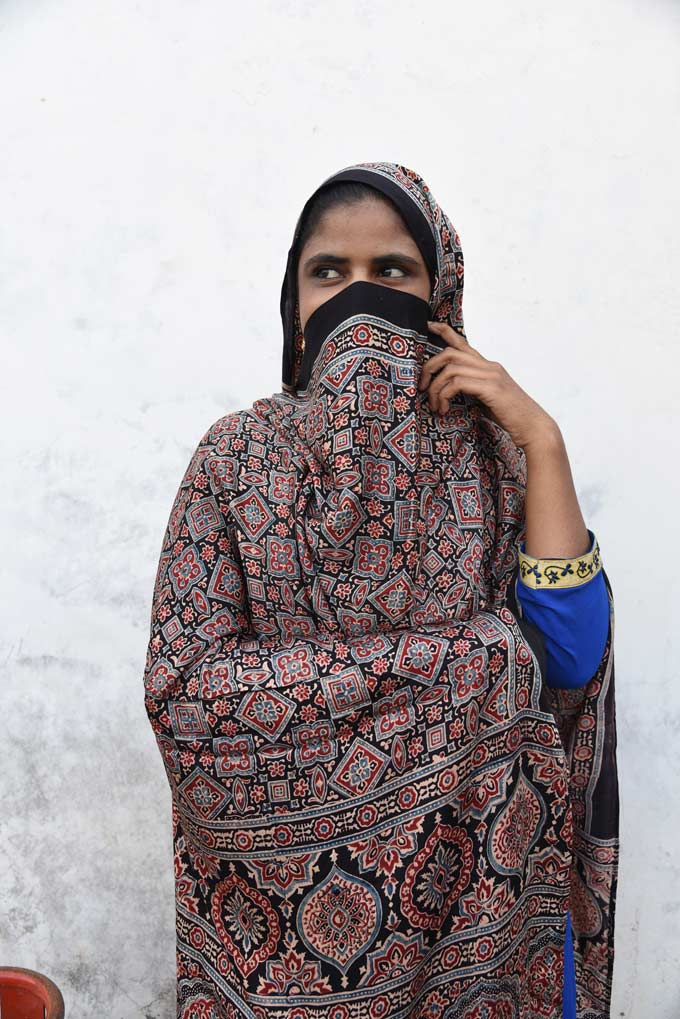 Journeying through the Rann, Jats would frequently assert that they could not sleep at night unless they had an Ajrakh sheet with which to cover themselves – and only Ajrakh would do. In her 1990 Sindh Jo Ajrak, the textile historian Noorjehan Bilgrami writes of similar habits across the border in Sindh: “A Sindhi feels ill at ease without his Ajrak; for him it is an all-purpose cloth.” Jat men refer to Ajrakh as their “original” garb, even though today many of them have given up such turbans and waistcloths for modern wear, keeping the Ajrakh pieces for special occasions.
Journeying through the Rann, Jats would frequently assert that they could not sleep at night unless they had an Ajrakh sheet with which to cover themselves – and only Ajrakh would do. In her 1990 Sindh Jo Ajrak, the textile historian Noorjehan Bilgrami writes of similar habits across the border in Sindh: “A Sindhi feels ill at ease without his Ajrak; for him it is an all-purpose cloth.” Jat men refer to Ajrakh as their “original” garb, even though today many of them have given up such turbans and waistcloths for modern wear, keeping the Ajrakh pieces for special occasions.
The name itself is thought to be derived from azrak, the term for ‘blue’ in Arabic and Persian, and indigo has remained the traditional dye used in Ajrakh printing. Grown in Sindh in vast quantities, indigo was a common dye for cotton cloth – used for clothing by all classes of Muslims – and was one of Sindh’s chief exports during the 19th century. Today, blue, red and white are the three colors typically found in Ajrakh patterns. In Kutch, the Khatris, a Muslim dyer community, specialize in Ajrakh printing. Ismail Khatri, a master printer and dyer, recounts how their ancestors were asked to come into Kutch from Sindh by the Maharao of Kutch during the 17th century.
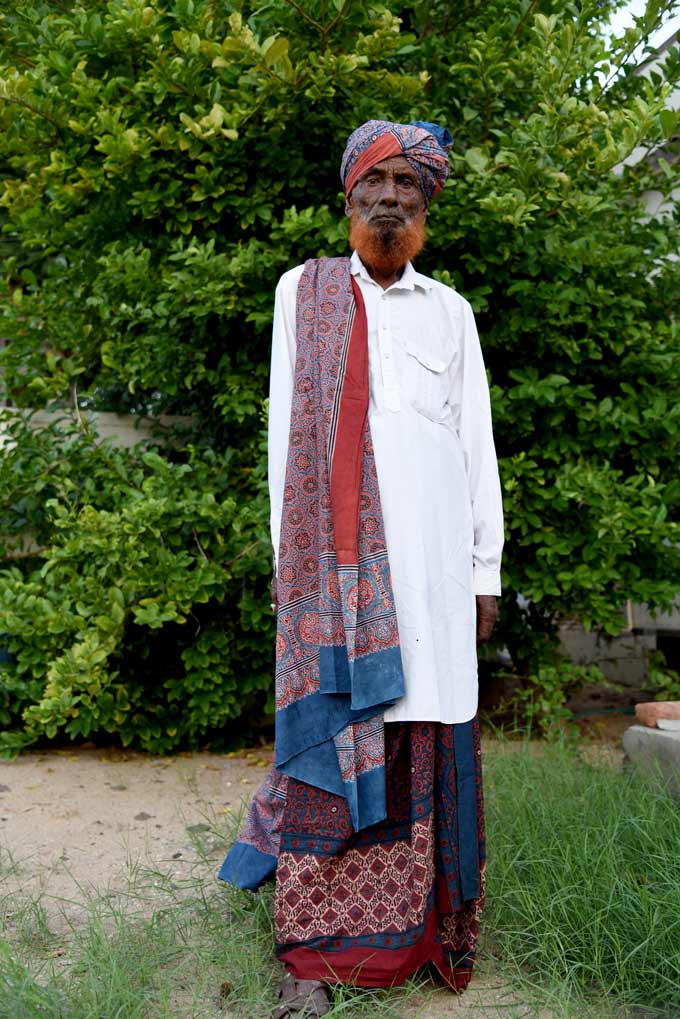 The superior value ascribed to Sindhi Ajrakh by the Kutch Jats is an interesting comment on notions of cultural authenticity and value. It quickly becomes relatively easy to pick out unusual patterns and colors from across the border. Sindhi Ajrakh is produced on cloth that is first bleached a stark white, after which the chemically dyed colors appear much more vibrant than the hues on the Kutchi cloth, which are more muted and subtle. The quality of groundwater also makes a big difference to the final color tones.
The superior value ascribed to Sindhi Ajrakh by the Kutch Jats is an interesting comment on notions of cultural authenticity and value. It quickly becomes relatively easy to pick out unusual patterns and colors from across the border. Sindhi Ajrakh is produced on cloth that is first bleached a stark white, after which the chemically dyed colors appear much more vibrant than the hues on the Kutchi cloth, which are more muted and subtle. The quality of groundwater also makes a big difference to the final color tones.
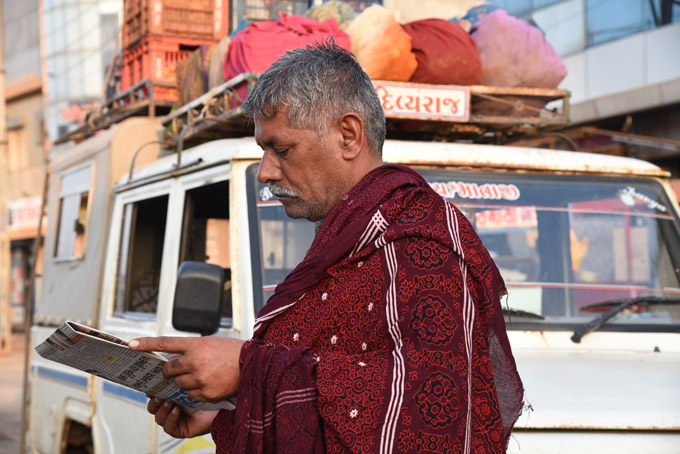 The village of Dhamadka is the only place in Kutch that produces vegetable-dyed Ajrakh, where Ismail Khatri and his brothers produce their ancestral wares for national and international buyers. The 2001 earthquake nearly destroyed Dhamadka, forcing the surviving members of the Khatri family to relocate. The earthquake had changed the groundwater table in Dhamadka, with the water’s increased iron content preventing the Ajrakh colors from attaining their fullest potential.
The village of Dhamadka is the only place in Kutch that produces vegetable-dyed Ajrakh, where Ismail Khatri and his brothers produce their ancestral wares for national and international buyers. The 2001 earthquake nearly destroyed Dhamadka, forcing the surviving members of the Khatri family to relocate. The earthquake had changed the groundwater table in Dhamadka, with the water’s increased iron content preventing the Ajrakh colors from attaining their fullest potential.
Most of the men in Banni wear Ajrakh waist- and shoulder-cloths that appear to be from across the border. One day in a small town in western Kutch, a man wearing a particularly outstanding and unusually colored Ajrakh wrap responded abruptly when asked about its origin — “From here” he said, and walked away. Later, upon learning that my research assistant was a Khatri, the man quietly divulged that his wrap was from Pakistan.
The Sindhi Ajrakh, as a prized commodity among Muslims in Kutch, is illegally smuggled across the border. It is not only that the Sindhi Ajrakh is inherently superior, its value also seems linked to the social context of its production. It is valued over Ajrakh produced in Kutch precisely for the connections across the border. One Kutch resident who was interviewed insisted that no matter how hard one tried in Kutch, it was never possible to get the kind of Ajrakh that came from Sindh. “It is the whiteness of the star that is crucial,” he explained, referring to the image in the center of most traditional Ajrakh patterns. “Anyone who knows their Ajrakh will be able to tell a genuine [meaning Sindhi] one by looking at the white star.”
Infra-politics
A largely illiterate population, the Jats continue to excel in the recitation of gaffs, the classical poetry of Sindh. By far the most famous poet in the region is Shah Abdul Latif, of the Sindhi town of Bhit. The compositions of ‘Bhittai’ and others, still recited today, form an extensive body of oral-historical accounts of the region. Singing qafi and sher (verses) is considered central to the pastoralist ethos — a good way to pass time while grazing in the desert. The verses and their recitation also evoke the romantic image central to the ideal of the pastoral life as one of ease and independence. Well-known poets recite classical verse and compose new ones, keeping the traditional meter and verse style. Thus, traditionally composed narratives now recount the events related to the 2001 earthquake. These verses provide a wealth of information that makes up somewhat for the absence of historical or ethnographic research in the region.
Perhaps the most popular poetry is derived from the story of Sasui-Punu, a tragic love story and perhaps one of the more famous compositions by Shah Abdul Latif. In Sindh, Hindus and Muslims alike have identified with this poetic tale. Sasui’s (also known as Sassi) ceaseless wandering in search of her lover was one of the metaphors of exile used in early Sindhi Hindu literature following Partition and their move to India: “Wandering aimlessly like Sasui, / criss-crossing mountains and streams, / we shred our shoes …” wrote the Sindhi poet Parsuram Zia. More recently, Sasui has also been incorporated by ethnic nationalist forces as a regional Sindhi heroine in Pakistan.
Another popularly recited verse is related to Umar-Marvi, a folktale from the Thar region of Sindh. In a short poem called “Moti Mi” (heavy rain), Marai is a young girl from Sindh, held captive by Umar. In some versions, she falls in love with her captor; in others, she is already in love with Umar and is abducted by an evil king, Hamir Sumra. In “Moti Mi”, she details the arrival of the rains in her hometown of Malir. “It has rained; the trees are in bloom and the fruit is ripe for picking; my friends are in the gardens waiting for me to pick the fruit with them; please let me go,” she pleads with her captor. This narrative is rich and evocative of the landscape of lower Sindh, and of the welcome arrival of the rains. The remembered landscape is one that richly belongs in Sindh.
Stories like these are narrated and sung in everyday contexts in Banni today. They address the proximity of Sindh in a manner quite different from the way in which the official regional narratives have chosen to do. In an analysis of Bedouin poetry, Middle Eastern scholar Lila Abu-Lughod argues that a “discourse on sentiment” can also be a “discourse of defiance” when poetic narratives from the grassroots contradict the systems that are defined from the authorities.
For those links with a trans-border territory that cannot be freely expressed in the everyday political context, traditional recitations and attachment to cloth have become a way in which the ‘system’ can be critiqued. This is what is referred to as ‘infra-politics’. Among the Jats of northern Kutch, the past is not a rupture, but instead flows into the present through specific tropes. Poetry and Ajrakh become ways to bring Sindh into their daily lives — integrated into the present in ways that are always and already there. This form of cultural flow, across a boundary line that is officially presented as discrete and impermeable, provides an interesting twist to the collective imagination of a region. The appreciation of qafi verses and Ajrakh on the Gujarat side of the border indicate that the Jats’ subjective experience of a region encompasses both Sindh and Kutch. The Jats embrace Sindh as intimately as it is rejected in the discourse of Gujarati nationalism.
____________________
